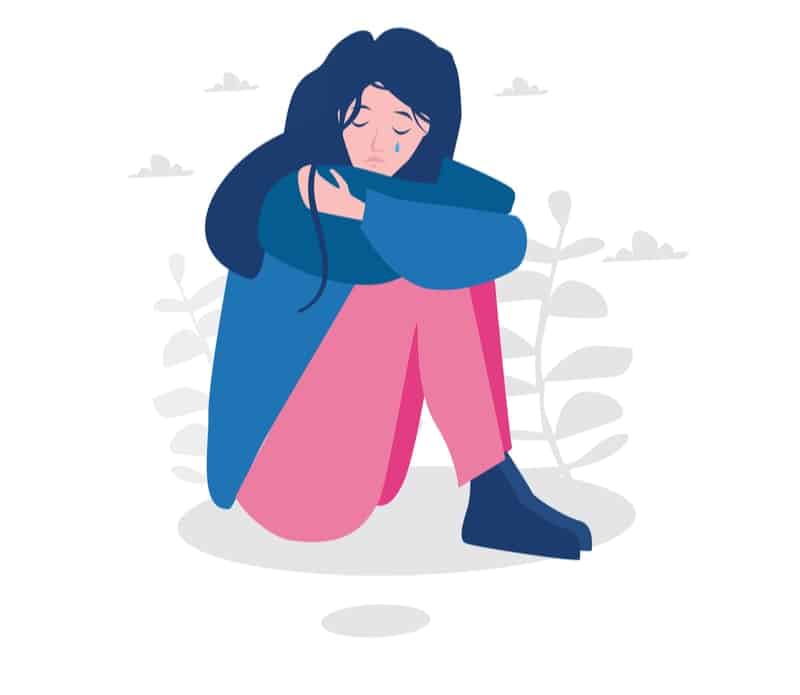Anxious Attachment Style: Definition, Signs, Causes, and How to Fix It

Do you have to constantly seek reassurance from your partner to know that they truly love you? If you never feel secure in your relationship and always feel like they’re trying to leave, even when they tell you otherwise, you might have an anxious attachment style.
Attachment theory analyzes the different types of attachment seen in adult relationships. People with a secure attachment style can have both a healthy relationship and a sense of independence. People with an anxious preoccupied attachment will struggle to maintain independence and will depend heavily on their partner to fill all their needs.
If you feel like your anxious attachment is affecting your relationship, it’s time to take a look at the different attachment styles and see where you fall.
The Origins of Attachment Theory
While attachment styles were adopted to understand romantic relationships, they were originally developed to understand infants. Psychoanalyst John Bowlby wanted to study and categorize the different reactions babies had when left alone and then reunited with their primary caregiver.
After a while, psychologists discovered they could use the four primary attachment types to analyze romantic relationships in adults as well.
Let’s go over a brief overview of each attachment style:
- Secure attachment style: This attachment style is the healthiest. Each person in the relationship can act autonomously but still can maintain a deep emotional connection.
- Avoidant attachment style: This attachment style has the independence that the secure attachment style possesses, but the person with this style cannot let down their guard enough to develop a deep emotional connection. Their lack of interest in getting close to others can stem from fear or a refusal to compromise on their autonomy. It’s the opposite of the anxious attachment style.
- Disorganized attachment style: This style also goes by the name “fearful-avoidant.” It’s a combination of the avoidant and anxious styles. They deeply desire emotional closeness with others, but they’re terrified that they’ll end up abandoned and alone. These conflicting needs result in erratic and unpredictable behavior.
- Anxious attachment style: We’ll go into more detail on this style, but the basics of this style include a host of insecurities and dependence on the partner to fulfill almost all their needs.
Now that we understand the basics of each attachment style, we can see how the anxious style manifests itself in comparison.

The Anxious Attachment Style
Let’s take a deeper dive into how an anxious attachment style shows itself in a relationship.
Someone who exhibits an anxious attachment style fundamentally fears being alone. They depend on their partner to validate them and fill all their social needs. While they need their partner to do all this emotional work for them, they also need constant validation from their partner that they still love them. They have difficulty believing they are loved.
Small acts of alleged disinterest can become a point of obsession. Being left unread, not getting a text immediately, or being told their partner is busy and can’t hang out at a specific time can turn into an emotional downward spiral. Over-analyzation of off-hand comments is common.
Why aren’t they responding? Are they with someone else? Do they resent me? Why don’t they want to hang out with me? Are they spending time with someone they would rather be with? Are they going to break up with me?
Every action and every word gets taken personally. If they don’t see their partner for a few days, they could replay the last moments when they said goodbye over and over in their head, wondering if they’re going to break up because they didn’t get a goodnight kiss.
How Anxious Attachment Styles Treat Their Partners
The manifestation of all this anxiety comes out in the way they expect to be treated by their partner.
The anxious attachment partner needs constant validation, both verbally and through actions. They constantly think that their partner is looking for a reason to break up with them, so they want to always check that they still love them.
This can manifest in constantly asking “do you still love me?” and searching for compliments.
Here are some common practices of someone with an anxious attachment style:
- Requiring the other partner to practice rituals they may not have naturally started, like always sending a good morning text. If the partner doesn’t follow this ritual, the individual can spiral.
- Analyzing any comment and try to find a deeper meaning. They have difficulty trusting their partner’s word at face value.
- Obsessing over social media posts. They want others to know just how happy they are, and they might ask their partner to make posts about them. They can also analyze their partner’s social media habits and panic if they like another person’s photo.
- Feeling uncomfortable when they aren’t included in their partner’s plans. If the partner is having a night out with friends, they’ll spend the night anxiously wondering what they are doing and why they didn’t get an invite.
- Never wanting to do anything alone. They want to spend as much time with their partner as possible.
- Developing their entire identity around being their person’s partner. If they broke up, they would likely have an identity crisis.
- Their emotional state is volatile. This can quickly devolve into passive-aggressive comments, outbursts, or fights.
This constant need for validation and accommodation of behaviors can put intense strain on the relationship. And it will likely lead to a breakup.

Causes of the Anxious Attachment Style
So where does this anxious attachment style come from?
The insecure attachment styles each come with their own variety of causes. But the root of the anxious attachment style comes from insecurity.
For whatever reason, this person needs constant reassurance of their worth from their partner because they don’t get it from themselves.
So where does this insecurity come from?
It could be situational. This person could have:
- Negative childhood experiences where they never received the love or attention they needed due to inconsistent parenting
- Trauma from past relationships causing them not to trust their current partner
It could also be related to their personality and self-perception. A mental health diagnosis such as acute anxiety could explain why the person needs validation. Depression can also cause low self-esteem that they require outside sources to bolster.
How to Change Your Attachment Style
If you feel like your insecurities put a strain on your romantic partner, you’ve already taken the first step towards adopting a secure attachment style. Recognizing the problem gives people with anxious attachment tendencies the opportunity to restructure the way they treat their partners and view themselves.
Healthy romantic relationships form when both partners love each other and love themselves. If you rely on your person to fill your emotional needs, you won’t give yourself the chance to be an individual with a full life of your own.
You owe it to yourself to take steps towards building a healthy relationship, and looking into attachment theory could give you that opportunity.
Author, Artist, Photographer.
Sarah Margaret is an artist who expresses her love for feminism, equality, and justice through a variety of mediums: photography, filmmaking, poetry, illustration, song, acting, and of course, writing.
She owns Still Poetry Photography, a company that showcases her passion for capturing poetic moments in time. Instead of poetry in motion, she captures visual poetry in fractions of a second, making cherished keepsakes of unforgettable moments.
She is the artist behind the Still Poetry Etsy shop, which houses her illustrations and bespoke, handmade items. She is the author of intricacies are just cracks in the wall, a narrative poetry anthology that follows a young woman discovering herself as she emerges from an abusive relationship.






Responses